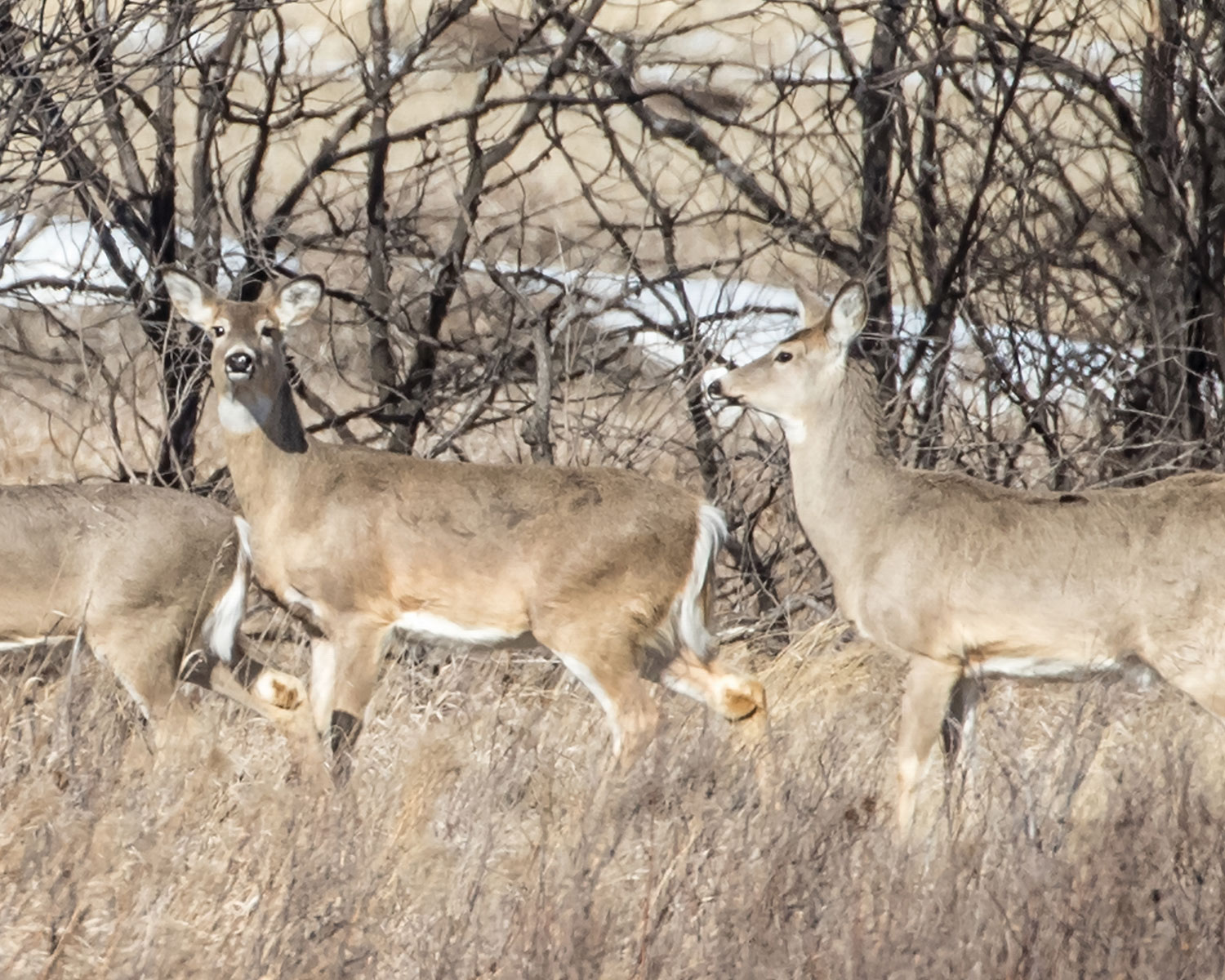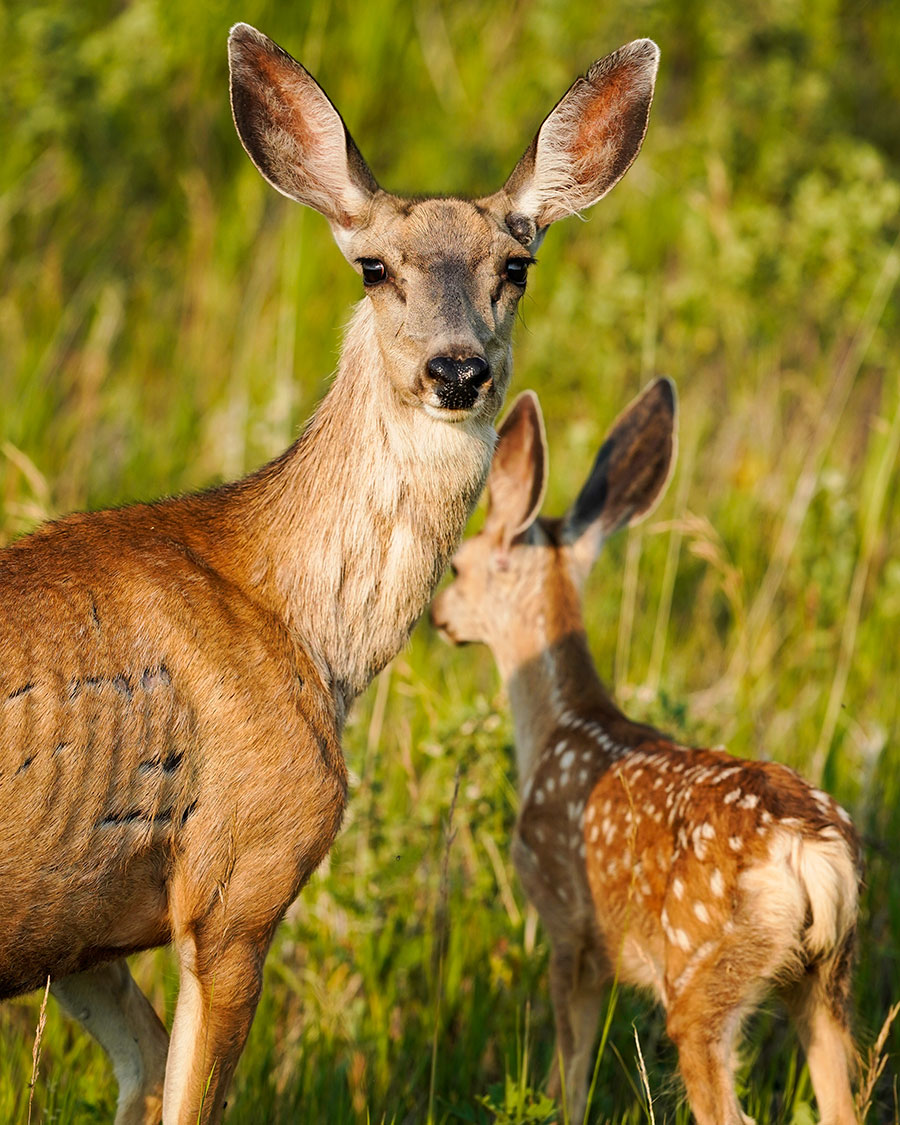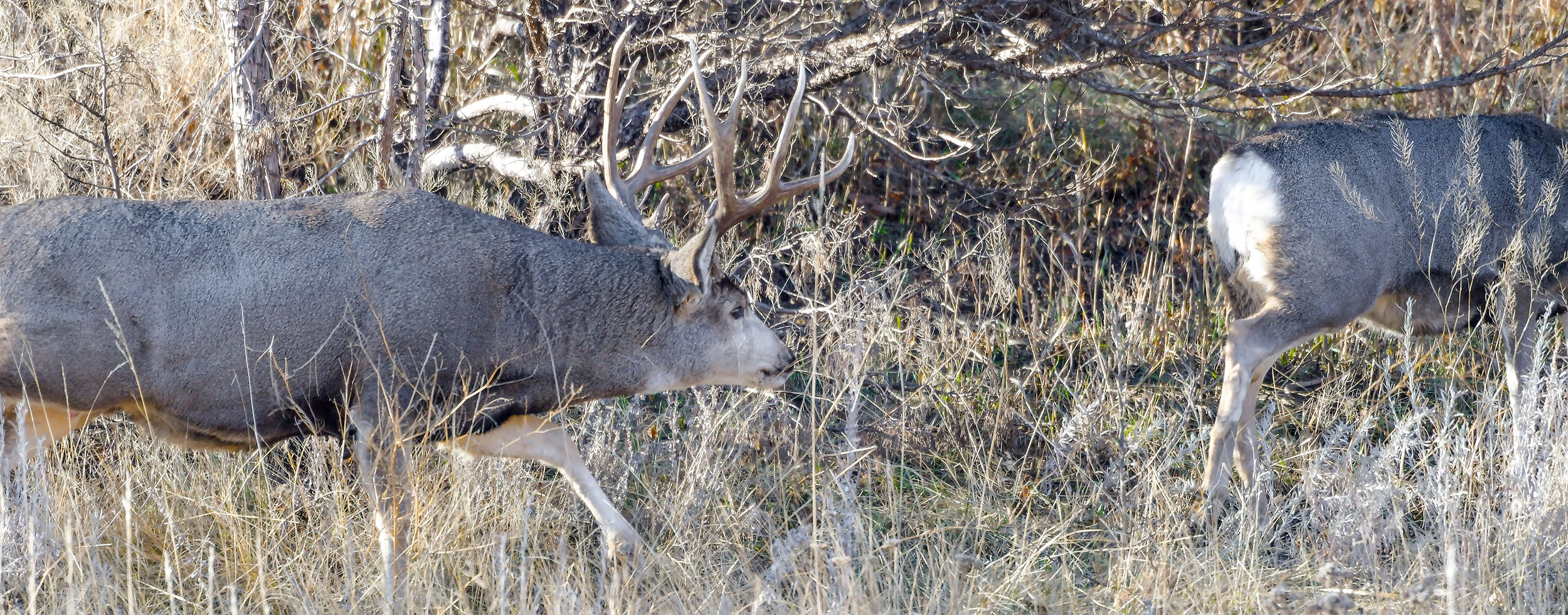
The Timing of it All
During the daylight-shortened days of fall, both whitetail and mule deer bucks become different animals.
Physically, bucks look different than they did weeks before. Their musculature is bigger, necks are swollen, and their summer-soft antlers have hardened for fighting off other bucks.

Socially, they’re no longer hanging with other males, discarding the bachelor group lifestyle as testosterone levels climb. Bucks become single-mined loners, concentrating exclusively – and not necessarily in this order – on staying alive and breeding does.
“If a buck doesn’t participate in the rut and produce young, they might as well have not existed,” said Bill Jensen, North Dakota Game and Fish Department big game management biologist.
While the rut isn’t as vital to hunters by comparison, it ranks pretty high because this period in a deer’s life arguably represents the best time to harvest a buck as deer become more active during shooting hours.
“Deer tend to be more active at dawn and dusk, just as a general rule,” Jensen said. “But during the rut, bucks are moving around constantly, no matter the time of day, to find does.”
Biologists say the rut typically occurs in this neck of the Northern Plains for whitetails from late October to December. Understanding this, North Dakota’s deer gun season is, in part, held starting in early November to increase hunter success as deer are more active at that time. Plus, odds of a winter storm not hampering hunters are better at this time of year.
“That’s part of it, because people do have higher success during the rut, but we also structure it around tradition,” Jensen said. “We schedule it for the first Friday before Veteran’s Day. That way it does not always overlap the Thanksgiving holiday.”
For more than 30 years, the state’s deer gun season has opened on the Friday before Nov. 11, which means the range of opening dates is Nov. 4-10. The season has consistently spanned 16.5 days during that same three-plus decades and when it does happen to be open over Thanksgiving, it’s simply a coincidence of the calendar.
One of the things hunters don’t consider as they are sitting in blinds, tree stands or leaning against rock piles waiting for a good one to wander by is the timing of it all. Why the breeding season happens when it does.
“There are two things that people don’t often think about,” Jensen said. “One is when green-up is in the spring when fawns hit the ground. The second factor is the length of the gestation period for the development of the fawn.”
Meaning: fawns are born during spring green-up when habitat conditions are best for survival. At that time, there is good cover for fawns to hide from predators and an abundance of nutritious vegetation for does experiencing the demands of milk production.

This timing is important, considering whitetail behavior, like other animals, is driven by long-term survival. With the possibility of a harsh winter ahead, fawns must attain a certain body weight to survive North Dakota’s leanest months.
While what triggers the rut in fall is often debated, the primary driver, Jensen said, is photoperiod.
“Over eons, deer have evolved to increase their testosterone production base upon photoperiod, the shortening of the days,” he said. "Essentially, that triggering of shorter days causes chemical changes in the brain which in turn causes the production of testosterone.”
The secondary driver appears to be the condition of the doe herd, Jensen said.
“If does are in real good condition, they tend to go into estrous earlier,” he said. “If they’re not in good condition, if they’re very young or very old, those animals go into estrous later and then that shifts the timing of the rut.”
Jensen said the peak of the rut for whitetails is generally between Nov. 15-20.
“For white-tailed deer, the breeding season is highly synchronous,” he said. “Generally, the peak when fawns are born is June 6. Seventy percent of fawns are born within plus or minus two weeks, and over 90% are born within four weeks of that date. So back dating to this time of year, that puts it at about the 15th to the 20th of November.”
For mule deer, it tends to be a little later and slowly tapers off, finally finishing up with a few animals actively breeding in late December.
There are a number of basic rut behaviors bucks exhibit this time of year, from posturing to show dominance to fighting with other bucks.
Another behavior also familiar to hunters who have spent enough time on the ground during the deer season is the lip curl, seen when a buck tilts its head back as if watching something pass overhead, while curling its upper lip and exposing teeth.
While the lip curl is easy to remember and rolls off the hunter’s tongue, biologists call this “flehmen” behavior.
When a doe approaches estrus, Jensen said, she provides clues to suitors as to her readiness. Some of the clues are behavioral and some are chemical – the later found in urine she deposits during frequent stops.
And this is where the lip curl comes in.
The purpose of the lip curl is to expose the scent from the urine to an olfactory organ called the vomeronasal, located on the roof of the mouth near the nasal passage. This organ aids the buck in his evaluation of the doe’s reproductive stage and willingness to mate.
If the message he receives is clear, the buck either follows the trail of a doe, or continues his search. It’s a time-consuming preoccupation that replays itself every fall in the deer world.
“The rut is really an energy drain on bucks. They don’t feed. They’re moving. They’re constantly checking. They’re fighting with other males,” Jensen said. “So, by December, they’re pretty well sapped and a lot of those dominant bucks may die in January because they are exhausted.”

